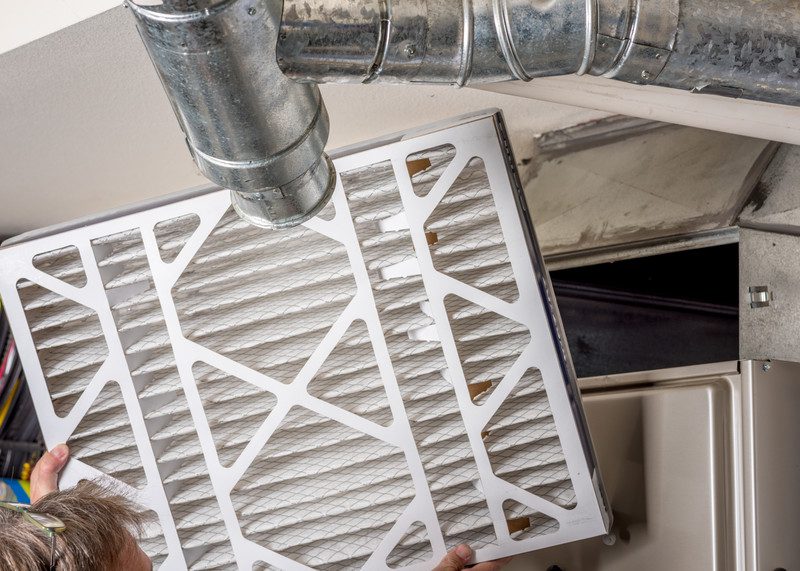An Easy Guide to Selecting the Right Air Filter for Your HVAC System

It’s not very expensive and doesn’t look very impressive. Yet, the filter that treats air in your forced-air heating and cooling system plays a crucial role in maintaining air quality and comfort in your home. Often called the “furnace filter,” HVAC air filters actually work with any sort of forced-air system, including furnaces, air conditioners and heat pumps. Though the HVAC filter has a simple job, it is important to know what you’re doing when you select the filter for your central heating and cooling system.
Why Selecting the Right Air Filter Is So Important
The air filter in your furnace, AC or heat pump serves more than one purpose. When it removes particulates from the air in a building, those tiny bits of dust and debris (which may include a variety of unwanted contaminants) can’t fall onto sensitive machinery, creating friction and long-term operational issues. Those particulates/contaminants also can’t get into the air you and other building occupants breathe.
It’s important to note, however, that depending on the type of air filter you use, it may only remove larger airborne particulates, leaving the smaller ones to permeate your indoor air. When it comes to airborne contaminants, small does not mean harmless. Allergens, bacteria and a variety of other potentially unhealthy substances may pass right through a cheap, low-efficiency air filter.
Picking the Best Air Filter for Your Home
Following are some key factors to consider when buying a furnace, AC or heat pump air filter:
- Size. This is a no-brainer. Each HVAC system requires a certain size of air filter. The best way to know the correct size for your specific system is to look at the filter that’s currently in the furnace, heat pump or AC. The size should be written on the filter but you can also measure it. If your HVAC system doesn’t currently have a filter, the size information will be included in the paperwork or be printed on the equipment near where the filter slides in. Some common sizes are 16 by 25 inches, 16 by 20 and 20 by 25, though there are many more. While the usual depth of an air filter is 1 inch, some models may run up to 5 inches thick. Using different sizes in the same furnace or other system isn’t an option.
- Pleated or non-pleated filters. This refers to the filtration media and whether it’s pleated (folded up and down at short intervals) or flat. Pleated filters have more surface area with which to capture airborne particulates. In other words, they filter out more stuff than cheap, flat-panel filters. Pleated filters cost more than flat filters, though the improvement in efficiency is well worth the few extra dollars you will have to spend on a pleated filter. Pleated filters typically have smaller openings (or pores). These allow for removal of smaller particles in the air, without impeding airflow.
- Air filter efficiency. Several different rating systems cover HVAC filters, though MERV (Minimum Efficiency Reporting Value) is the most common. The higher the number, the more and smaller particulates the filter will remove from the air. Homeowners shopping for a furnace or AC filter can use the rating to compare filters and select the right one for their own home situation. The numbers range from MERV 1 to 20, though air filters used in homes usually don’t fall below 5 or exceed 16. MERV 1-4 filters will only remove the largest particles from the air, so their utility is restricted to protecting equipment rather than cleaning indoor air. On the other hand, the highest efficiency filters – MERV 17 and higher – may restrict airflow in your HVAC system. This can cause all sorts of problems for the equipment, system efficiency and comfort. For normal household use, look for a filter in the MERV 8-14 range. Select the higher end of that range if you’re especially concerned about indoor air quality.
Check the Filter Monthly
Once you select the best air filter for your home (don’t hesitate to consult with your trusted HVAC contractor), it’s important to commit to replacing the filter on a regular basis. If you have a reusable filter, commit to regular cleaning. Usually, for both replacement or cleaning, this means monthly during high-use seasons (winter and summer). Get in the habit of inspecting the filter once a month, and replacing it when it looks clogged or dirty. During the transition seasons of fall and spring in southwest Ohio, you may get away with skipping a month before needing to replace the filter.
